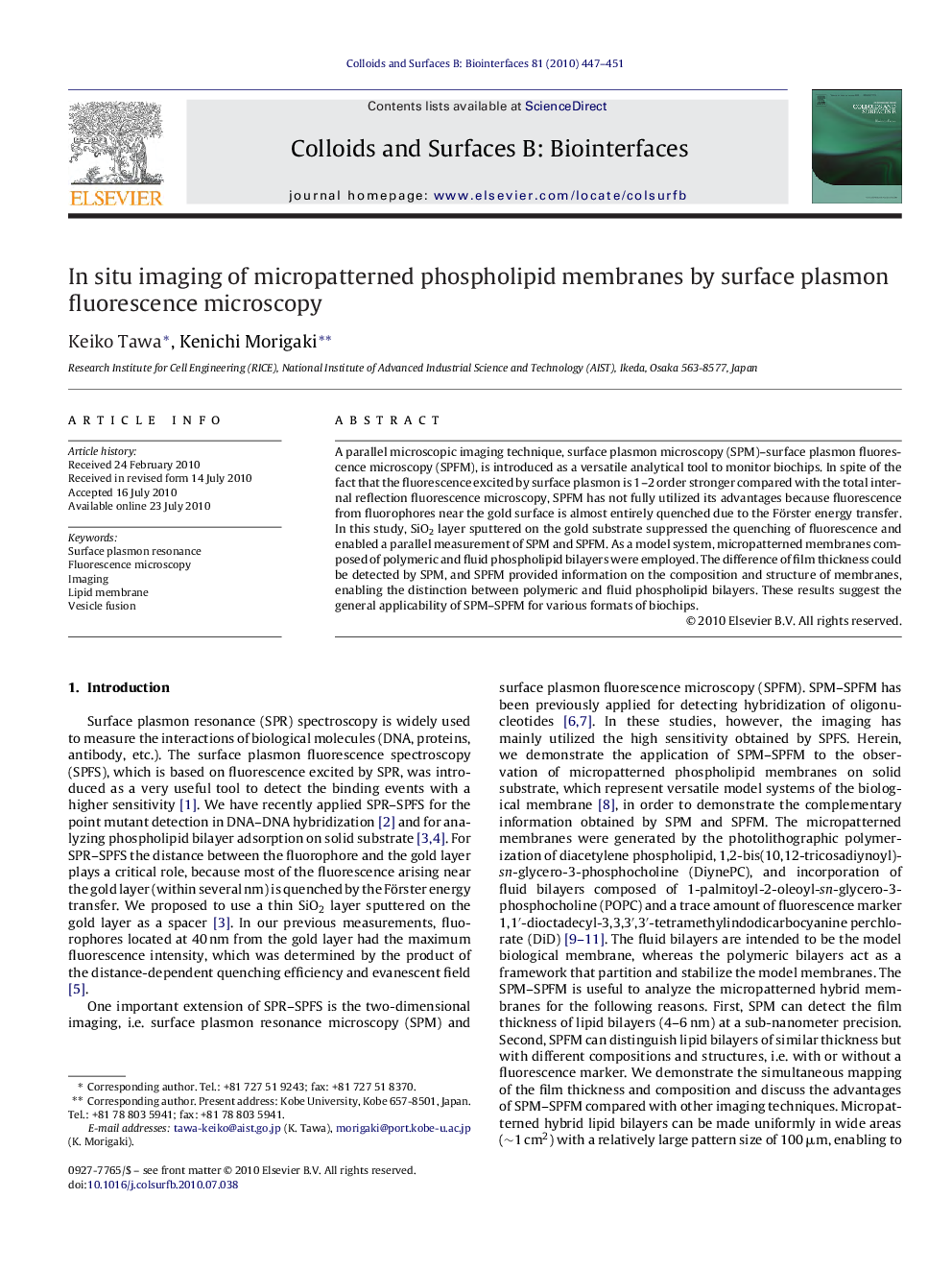| Article ID | Journal | Published Year | Pages | File Type |
|---|---|---|---|---|
| 601414 | Colloids and Surfaces B: Biointerfaces | 2010 | 5 Pages |
A parallel microscopic imaging technique, surface plasmon microscopy (SPM)–surface plasmon fluorescence microscopy (SPFM), is introduced as a versatile analytical tool to monitor biochips. In spite of the fact that the fluorescence excited by surface plasmon is 1–2 order stronger compared with the total internal reflection fluorescence microscopy, SPFM has not fully utilized its advantages because fluorescence from fluorophores near the gold surface is almost entirely quenched due to the Förster energy transfer. In this study, SiO2 layer sputtered on the gold substrate suppressed the quenching of fluorescence and enabled a parallel measurement of SPM and SPFM. As a model system, micropatterned membranes composed of polymeric and fluid phospholipid bilayers were employed. The difference of film thickness could be detected by SPM, and SPFM provided information on the composition and structure of membranes, enabling the distinction between polymeric and fluid phospholipid bilayers. These results suggest the general applicability of SPM–SPFM for various formats of biochips.
